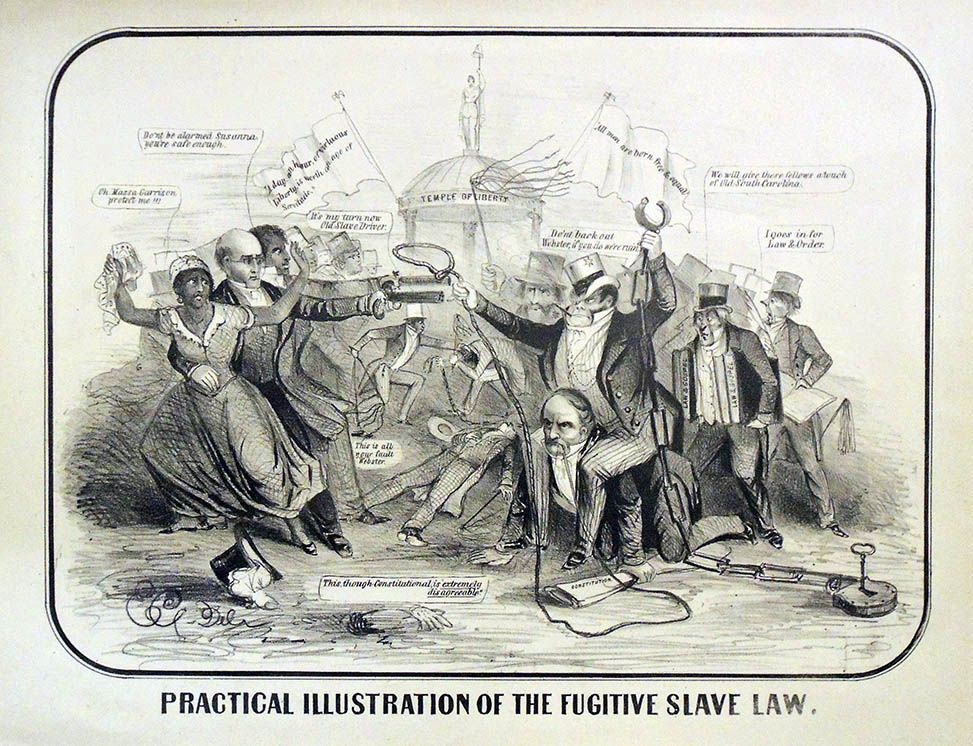As a center of abolitionism Boston became a symbol and target for southern slave hunters. Four incidents of resistance – involving Lewis Hayden – gained national attention.
“All they want is one from Boston...to show the discontented ones at home that it can be done.”
– Abolitionist Wendell Phillips on “slave catchers”
”
- Library of Congress
Ellen Craft . . .
In a celebrated escape Ellen Craft pretended to be a male plantation owner traveling north for medical treatment, accompanied by a male slave (her future husband William.) For a time they took refuge with Lewis and Harriet Hayden. Ellen’s success on the lecture circuit attracted the attention of “slave catchers.” Hayden put dynamite in his cellar and threatened to blow the house up if they tried to enter.
Setting the Stage:
The “Latimer Law” In 1843, escaped slave George Latimer was held under an earlier version of the Fugitive Slave Law. Abolitionists protested with 65,000 petitions weighing 150 pounds and rolled into the State House. In response, the legislature passed a “Personal Freedom Law” prohibiting the holding of escaped slaves in Massachusetts jails. By denying secure facilities it encouraged later rescue attempts.
Latimer petition . . .
An Act . . .
